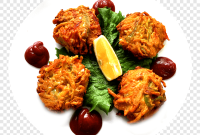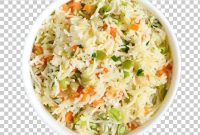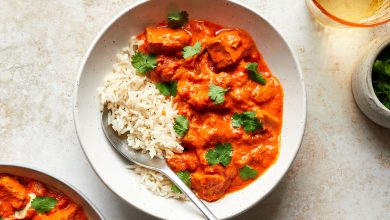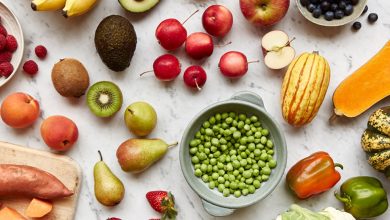Oriental Cuisine › Indian Cuisine: Vegetable Dishes
I’m starting to publish a selection of the best recipes from my personal collection. It was decided to close the “Kitchen” section on our website and concentrate the culinary party in this section of the forum. You can add your favorite recipes and discuss existing ones.
Cooking vegetables the Indian way means cooking them in a way that brings out their flavor while retaining their nutritional value. From the recipes in this chapter, you will learn how to turn the most ordinary vegetables into extraordinary dishes with amazing aroma and exquisite taste.
The secret to cooking vegetable dishes lies in the skillful use of spices and seasonings. In addition, yogurt, sour cream, paneer, nuts and fresh herbs add variety to vegetable dishes, which are ideally combined with vegetables.
Many of the vegetables mentioned in the recipes can be bought in vegetable shops, rarer ones need to be found in the market. As far as possible, use vegetables grown naturally. They usually differ from vegetables grown in artificial conditions in smaller sizes.
but surpass them in color intensity. These vegetables – bought or grown by you – may have some defects, but they do not contain chemicals, which is much more important. A treatise on traditional Indian medicine, Ayurveda, states that a necessary condition for maintaining health and achieving harmony with the outside world is the use of products grown naturally where you live and harvested in season.

To cook vegetables in the “wet” way, you must first fry the spices in a small amount of ghee or vegetable oil and then simmer the vegetables along with the spices. When the vegetables are almost ready, add some water and either grated coconut or yogurt or tomato puree to thicken the sauce.
cover the pot and leave the vegetables to simmer for a few more minutes. To cook vegetables in the “dry” way, they must first be fried in oil and then simmered with the lid closed, either without water at all or with the minimum amount of water necessary to prevent burning. Closer to the end, remove the lid and evaporate excess moisture. Vegetables prepared in both ways go well with rice or Indian bread.
There are some other ways of cooking vegetables mentioned in this section of Hindustan.ru, such as cooking vegetable pancakes, cooking vegetables with rice and dal, or frying vegetables in dough. But no matter what method you use.
one of the above or some other (it can be baking, stewing, steaming, stuffing and deep-frying), at one stage or another it is necessary to put spices in the dish. Usually, spices are first fried in hot ghee or vegetable oil, and then vegetables are added to them. The oil must be hot enough so that when it comes into contact with wet vegetables, they make the “chum” sound familiar to Indian cooks.
Frozen vegetables, which have little to no nutritional value, should be avoided. The taste of fresh vegetable dishes fully compensates for the time spent on their preparation. Tomatoes can be cut into quarters, green beans and bell peppers into pieces, carrots into circles, potatoes into cubes.

and cauliflower into inflorescences. Heat one tablespoon of ghee in a saucepan over medium heat and toast the cumin seeds, mustard seeds, Shamballa seeds, curry leaves, ginger and pepper. After 30-45 seconds, throw in turmeric and asafetida.
then add chopped vegetables. (If you want to add a special flavor to the dish, deep-fry the diced potatoes, carrot slices, and cauliflower buds and put them in a pack at the end.) Reduce the heat, cover the pot with a lid and simmer the vegetables over low heat until they are soft.
Melt butter or ghee in a three-liter thick-bottomed saucepan, add semolina and, stirring occasionally, fry it over medium heat. After 10-15 minutes, all semolina should become a pale brown color.
When the water boils, put the vegetables in the semolina, throw in the raisins (if you want), then reduce the heat and add boiling water to this mixture. Stir a few times until no lumps remain, then cover tightly. The dish should reach on a minimum fire. After 5 minutes, lift the lid and see if the semolina has absorbed all the water. At the end, add ground black pepper, lemon juice and butter. Stir.
Mix the hot peppers, ginger, cumin seeds and mustard seeds in a small bowl. Pour the ghee or a mixture of vegetable oil and butter into a wide, heavy Teflon-lined saucepan and place over moderately high heat. Whilst not smoking, add the spice mixture to the oil.



